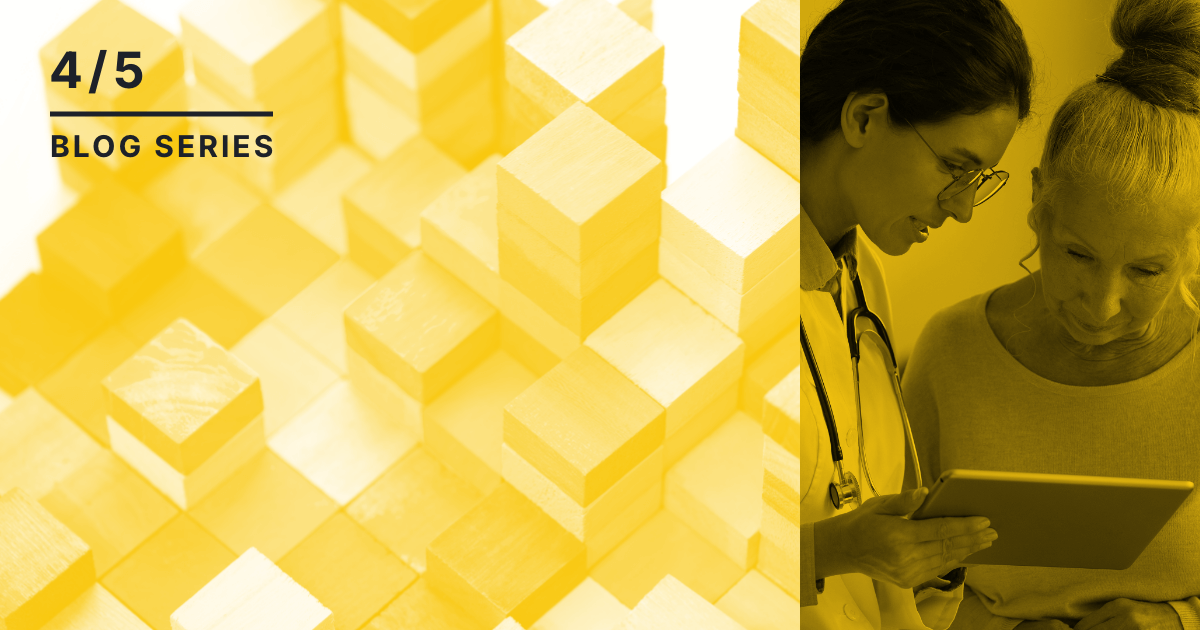In our ongoing series on how Privacy-Preserving Record Linkage (PPRL) technology can help government agencies synchronize the abundance of real-world data (RWD) available today to better preserve and promote public health, we have already discussed disease surveillance for a rapid response to outbreaks and improving drug safety. Now, we delve into the role of RWD in improving health outcomes.
Preserving and promoting public health depends on understanding health outcomes. From responding to public health emergencies, such as the COVID-19 pandemic, to supporting research for conditions such as diabetes, obesity and cancer that impact tens of millions of Americans, to managing the costs and care for patients on Medicare and Medicaid, government agencies need to know how people are responding to their care in the real world.
As we experienced during the pandemic, collecting first-person data can be both slow and burdensome. To effectively monitor and respond to public health outcomes, government agencies need RWD from sources such as closed and open medical and pharmacy claims, electronic health records (EHR), lab results, and hospital chargemasters, among others. Additionally, consumer data sources can provide social determinants of health (SDOH), such as race, ethnicity, income, education, geographical characteristics, and numerous other variables, to assist government agencies in understanding and ensuring equitable health outcomes.
Historically, agencies have utilized claims data alone to understand and track health outcomes, but as mentioned in our previous article on disease surveillance, medical claims have their limitations. Open clearinghouse claims provide data from particular physicians or pharmacies and only a partial view of a patient’s healthcare journey. Closed payer claims provide data across healthcare settings, but only for the time during which the patient is enrolled. Synchronizing claims data with complementary RWD sources provides a much richer and more comprehensive view of patient history, care received and associated outcomes.
Synced outcomes
To understand the richness that can be gained by synchronizing multiple data sources, let’s follow the journey of a patient with chronic kidney disease (CKD), a condition with no cure that is a common comorbidity of diabetes, and compare the insights from just claims data versus multiple synced sources, such as EHR, labs and hospital chargemaster, in addition to claims:*
Annual wellness visit
We start our journey with the patient receiving their annual wellness visit with their primary care physician (PCP).
Closed claims: Observe PCP visit and comorbidities of obesity and dyslipidemia.
Synced sources: Also indicate patient’s vitals, weight and height, and lab results with a glomerular filtration rate (eGFR) of 64, which is a blood test that reveals how well the kidneys are filtering blood, as well as indicate the potential for CKD.
One year later
The patient has another annual wellness visit.
Closed claims: Observe a comorbidity of hypertension.
Synced sources: Also observe an eGFR of 60 and a referral to a nephrologist.
Nephrologist visit
The patient sees a nephrologist for diagnostic testing.
Closed claims: Observe the visit and a diagnosis of stage 3 CKD.
Synced sources: Provide the lab results with an eGFR of 46 and a cardiology referral.
Cardiology visit
The patient sees a cardiologist for more diagnostic testing.
Closed claims: Observe the visit and that a cardiac prescription is filled.
Synced sources: Also reveal a diagnosis of coronary artery disease and that the eGFR is now 40.
Nephrologist follow up
The patient returns to the nephrologist for a follow up visit and surveillance of the condition.
Closed claims: Observe the visit and the additional diagnosis of coronary artery disease.
Synced sources: Reveal an eGFR of 34 and a diagnosis of stage 4 CKD.
Hospitalization
As the condition progresses, the patient is hospitalized.
Closed claims: Observe that the hospital visit occurred.
Synced sources: Reveal that the patient started emergency dialysis and is in end stage renal disease with an eGFR of 11.
As this example demonstrates, data from closed claims alone provide a longitudinal but more narrow view of disease progression and care received. Whereas combining EHR, labs and other data form a more holistic view of the patient’s healthcare journey and enable researchers, payers and policy makers to make more informed decisions related to improved outcomes.
Synchronization of RWD can benefit the study of diseases other than CKD. For example, the combination of labs, EHRs and medical claims can be critical to understanding Alzheimer's and related dementias to gain insight into cognitive, functional, behavioral and psychiatric testing, blood markers and lab tests, and brain imaging procedures.
HealthVerity has applied this synchronized approach across dozens of therapeutic areas, including CKD, Alzheimer’s, sexually transmitted infections, postpartum care and childhood cancer.
Syncing technology
PPRL technology allows government agencies to gain the more comprehensive view of the patient journey that comes from synchronizing multiple disparate sources, while maintaining patient privacy and HIPAA compliance. It is important, however, that the PPRL technology accurately resolves patient identity across sources or you will have a fragmented view of the patient journey and a misinformed understanding of patient history, care received and outcomes.
The HealthVerity PPRL solution, Identity Manager, has shown to be 10x more accurate than legacy tokenization technologies. This FedRAMP-authorized solution uses a universal de-identifier, known as a HealthVerity ID (HVID), that synchronizes patients over time and across near limitless data sources. HVIDs are matched to a continuously updated referential database of over 200 billion healthcare and consumer transactions where advanced algorithms and machine learning techniques are applied to handle the inherent noise in RWD, resulting in greater accuracy. By synchronizing this technology with the nation’s largest fully interoperable and HIPAA-compliant healthcare and consumer data ecosystem, HealthVerity empowers government agencies to better understand health outcomes to preserve and promote public health.
In the final installment in this five-part series, we will discuss how government agencies can use RWD to develop alternative payment and care models.
Click here to learn how HealthVerity can help your agency monitor health outcomes or support other data initiatives.
* This is for demonstration purposes only and is not meant to be an accurate representation of disease progression.





